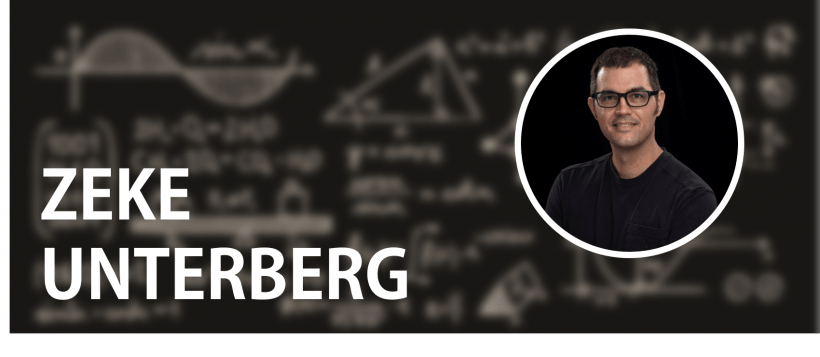WHAT DID THE 2011 EARLY CAREER AWARD ALLOW YOU TO DO?
Harnessing energy from nuclear fusion is widely regarded as one of the grand challenges of the 21st century, as it would create a virtually inexhaustible, non-carbon-based energy source capable of meeting global energy needs.
Currently, the Sun is the only sustained burning plasma in our solar system. Creating a star on Earth, a typical characterization of a nuclear fusion reactor, means the inside of these future reactors will be among the harshest environments ever produced. Most of the advances in fusion energy over the past 60 years of research have occurred in confining very hot gases (those in the plasma state) by magnetic fields. The tokamak is the magnetic-field-confinement concept closest to attaining fusion energy.
One complication in operating tokamaks is caused by edge-localized modes, or ELMs. These high-energy “burps” akin to solar flares can quickly damage or destroy reactor vessel components exposed to the plasma boundary. Therefore, we need a detailed understanding of tokamak ELMs as we move closer to making nuclear fusion reactors a reality.
This Early Career Research Program award enabled work to be performed on understanding the impact and mitigation of ELMs in a tokamak at the DIII-D National Fusion Facility at General Atomics.
Using new methods and analysis, we obtained measurements in the tokamak boundary region, which is between the confined plasma and the vessel wall. We performed detailed studies of the 3D nature of the tokamak boundary. We then showed how plasma-response models could be used to understand ELM onset.
This award also allowed our group to perform novel isotopically enriched tungsten studies on DIII-D that gave insight into the damage ELMs can produce at specific vessel wall locations.
The methods and analysis developed under this award continue to help us optimize the operation of present-day tokamaks and plasma-material interactions therein that will occur in future nuclear fusion reactors.
ABOUT:
Zeke Unterberg is a senior research scientist at Oak Ridge National Laboratory and a group leader in the Fusion Energy Division.
SUPPORTING THE DOE SC MISSION:
The Early Career Research Program provides financial support that is foundational to early career investigators, enabling them to define and direct independent research in areas important to DOE missions. The development of outstanding scientists and research leaders is of paramount importance to the Department of Energy Office of Science. By investing in the next generation of researchers, the Office of Science champions lifelong careers in discovery science.
For more information, please go to the Early Career Research Program.
THE 2011 PROJECT ABSTRACT:
Innovative Techniques for Improved Diagnosis and Control of Edge Localized Modes in 3D Toroidal Plasmas
The next step toward a magnetic fusion reactor is the large international experiment currently being built in France called ITER. A major challenge for ITER and future fusion reactors is controlling the intense flux of heat deposited on the confinement chamber wall by high‐energy, long‐pulse plasmas. Furthermore, local concentrations of heat flux can seriously damage the wall surface. Thus, interactions of the plasma with the material wall must be monitored and controlled in three dimensions (3D). Of special concern are sudden large impulses of heat resulting from plasma instabilities such as the Edge Localized Mode (ELM).
These impulses create peaked values of heat flux that are many times the steady‐state wall flux levels and thus can augment the erosion of wall surface. This research aims to build tools to improve the understanding of ELM excitation, mitigation, and suppression mechanisms toward the design of more effective control methods. The design principles and mathematical tools developed and validated in this work can, in principle, help diagnose a wide range of 3D edge physics phenomena closely related to those examined here. The implementation of two diagnostics for measurement of these 3D edge perturbations will be pursued. The first diagnostic aims to measure the plasma edge magnetic field structure during the mitigation and/or suppression of ELMs by applying external 3D fields know as resonant magnetic perturbations. The other diagnostic will be used for precise tracking of high‐speed, cryogenic pellets used for triggering ELMs. Both of these diagnostics rely on the processing of 2D data to determine 3D plasma characteristics. Therefore, a unifying analysis method to extract this 3D information will be developed using common mathematical techniques.
The new information given by this analysis can aid in the fundamental understanding of ELMs by providing novel, high‐fidelity 3D information during ELM control experiments in present‐day experiments.
RESOURCES:
M.W. Shafer, E.A. Unterberg, A. Wingen, D.J. Battaglia, T.E. Evans, N.M. Ferraro, J.H. Harris, D.L. Hillis, and R. Nazikian, “Plasma response measurements of non-axisymmetric magnetic perturbations on DIII-D via soft x-ray imaging.” Phys. Plasmas 21, 122518 (2014). [DOI: 10.1063/1.4905129]
A. Wingen, N.M. Ferraro, M.W. Shafer, E.A. Unterberg, T.E. Evans, D.L. Hillis, and P.B. Snyder, “Impact of plasma response on plasma displacements in DIII-D during application of external 3D perturbations.” Nucl. Fusion 54, 064007 (2014). [DOI: 10.1088/0029-5515/54/6/064007]
E.A. Unterberg, et al., “Localized divertor leakage measurements using isotopic tungsten sources during ELM-y H-mode discharges on DIII-D.” Nucl. Fusion 60, 016028 (2020). [DOI: 10.1088/1741-4326/ab537b]
DOE EXPLAINS… offers straightforward explanations of key words and concepts in fundamental science. It also describes how these concepts apply to the work that the Department of Energy’s Office of Science conducts as it helps the United States excel in research across the scientific spectrum. For more information on fusion nuclear science and DOE’s research in this area, please go to “DOE EXPLAINS…Plasma Confinement.”
Additional profiles of the Early Career Research Program award recipients can be found at /science/listings/early-career-program.
The Office of Science is the single largest supporter of basic research in the physical sciences in the United States and is working to address some of the most pressing challenges of our time. For more information, please visit www.energy.gov/science.
Sandra Allen McLean is a Communications Specialist in the Office of Science, Office of Communications and Public Affairs [email protected].




